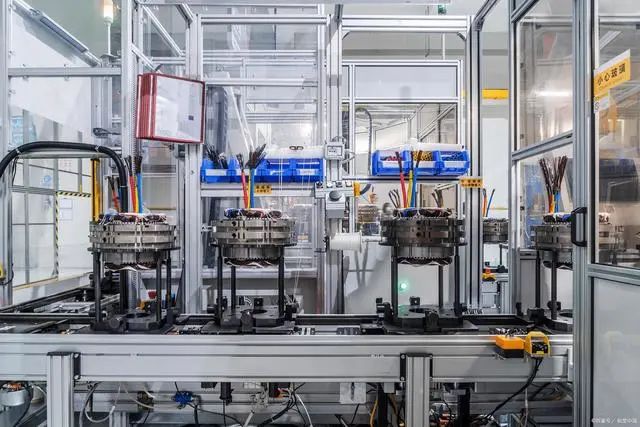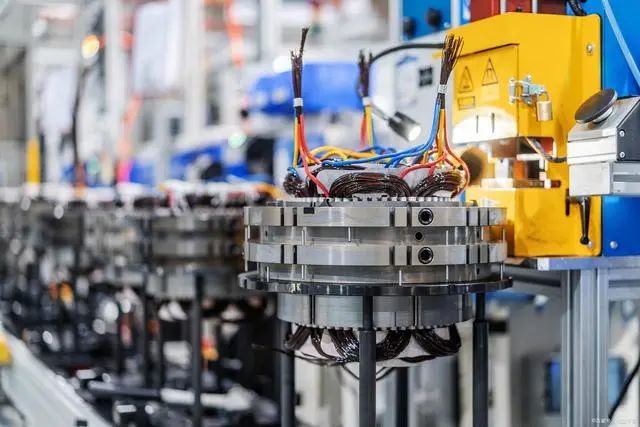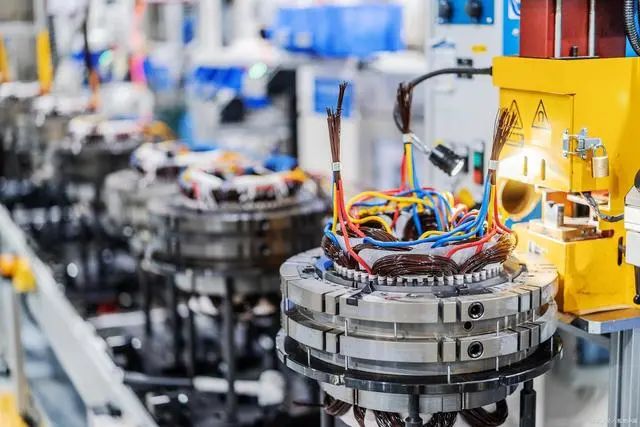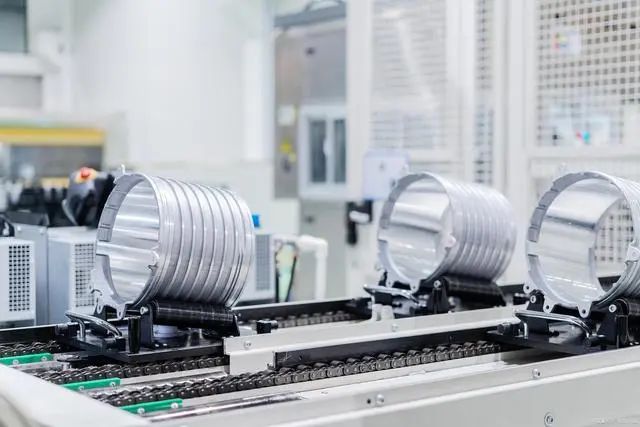Due to their compactness and high torque density, permanent magnet synchronous motors are widely used in many industrial applications, especially for high-performance drive systems such as submarine propulsion systems. Permanent magnet synchronous motors do not require the use of slip rings for excitation, reducing rotor maintenance and losses. Permanent magnet synchronous motors are highly efficient and suitable for high-performance drive systems such as CNC machine tools, robotics and automated production systems in industry.
Generally, the design and construction of permanent magnet synchronous motors must consider both the stator and rotor structure in order to obtain a high-performance motor.
The structure of permanent magnet synchronous motor
Air- gap magnetic flux density: Determined according to the design of asynchronous motors, etc., the design of permanent magnet rotors and the use of special requirements for switching stator windings. In addition, it is assumed that the stator is a slotted stator. The air gap flux density is limited by the saturation of the stator core. In particular, the peak flux density is limited by the width of the gear teeth, while the back of the stator determines the maximum total flux.
Furthermore, the allowable saturation level depends on the application. Typically, high-efficiency motors have a lower flux density, while motors designed for maximum torque density have a higher flux density. The peak air gap flux density is usually in the range of 0.7–1.1 Tesla. It should be noted that this is the total flux density, ie the sum of the rotor and stator fluxes. This means that if the armature reaction force is low, it means that the alignment torque is high.
However, in order to achieve a large reluctance torque contribution, the stator reaction force must be large. Machine parameters show that large m and small inductance L are mainly required to obtain alignment torque. This is usually suitable for operation below base speed as high inductance reduces power factor.
Permanent magnet material:
Magnets play an important role in many devices, therefore, improving the performance of these materials is very important, and attention is currently focused on rare earth and transition metal-based materials that can obtain permanent magnets with high magnetic properties. Depending on the technology, magnets have different magnetic and mechanical properties and exhibit different corrosion resistance.
NdFeB (Nd2Fe14B) and Samarium Cobalt (Sm1Co5 and Sm2Co17) magnets are the most advanced commercial permanent magnet materials available today. Within each class of rare earth magnets there is a wide variety of grades. NdFeB magnets were commercialized in the early 1980s. They are widely used today in many different applications. The cost of this magnet material (per energy product) is comparable to that of ferrite magnets, and on a per kilogram basis, NdFeB magnets cost about 10 to 20 times as much as ferrite magnets.
Some important properties used to compare permanent magnets are: remanence (Mr), which measures the strength of the permanent magnet magnetic field, coercive force (Hcj), the ability of the material to resist demagnetization, energy product (BHmax), density magnetic energy; Curie temperature (TC), the temperature at which the material loses its magnetism. Neodymium magnets have higher remanence, higher coercivity and energy product, but are generally of the lower Curie temperature type, Neodymium works with Terbium and Dysprosium in order to maintain its magnetic properties at high temperatures.
Permanent Magnet Synchronous Motor Design
In the design of a permanent magnet synchronous motor (PMSM), the construction of the permanent magnet rotor is based on the stator frame of a three-phase induction motor without changing the geometry of the stator and windings. Specifications and geometry include: motor speed, frequency, number of poles, stator length, inner and outer diameters, number of rotor slots. The design of PMSM includes copper loss, back EMF, iron loss and self and mutual inductance, magnetic flux, stator resistance, etc.
Calculation of self-inductance and mutual inductance :
Inductance L can be defined as the ratio of flux linkage to flux-producing current I, in Henrys (H), equal to Weber per ampere. An inductor is a device used to store energy in a magnetic field, similar to how a capacitor stores energy in an electric field. Inductors usually consist of coils, usually wound around a ferrite or ferromagnetic core, and their inductance value is only related to the physical structure of the conductor and the permeability of the material through which the magnetic flux passes.
The steps to find the inductance are as follows: 1. Suppose there is a current I in the conductor. 2. Use Biot-Savart’s law or Ampere’s loop law (if available) to determine that B is sufficiently symmetric. 3. Calculate the total flux connecting all circuits. 4. Multiply the total magnetic flux by the number of loops to obtain the flux linkage, and carry out the design of the permanent magnet synchronous motor by evaluating the required parameters.
The study found that the design of using NdFeB as the AC permanent magnet rotor material increased the magnetic flux generated in the air gap, resulting in a reduction in the inner radius of the stator, while the inner radius of the stator using the samarium cobalt permanent magnet rotor material was larger. The results show that the effective copper loss in NdFeB is reduced by 8.124%. For samarium cobalt as a permanent magnet material, the magnetic flux will be a sinusoidal variation. Generally, the design and construction of permanent magnet synchronous motors must consider both the stator and rotor structure in order to obtain a high-performance motor.
in conclusion
Permanent magnet synchronous motor (PMSM) is a synchronous motor that uses high magnetic materials for magnetization, and has the characteristics of high efficiency, simple structure, and easy control. This permanent magnet synchronous motor has applications in traction, automotive, robotics, and aerospace technology. The power density of permanent magnet synchronous motors is higher than that of induction motors of the same rating because there is no stator power dedicated to generating the magnetic field. .
At present, the design of PMSM requires not only higher power, but also lower mass and lower moment of inertia.
Post time: Jul-01-2022



